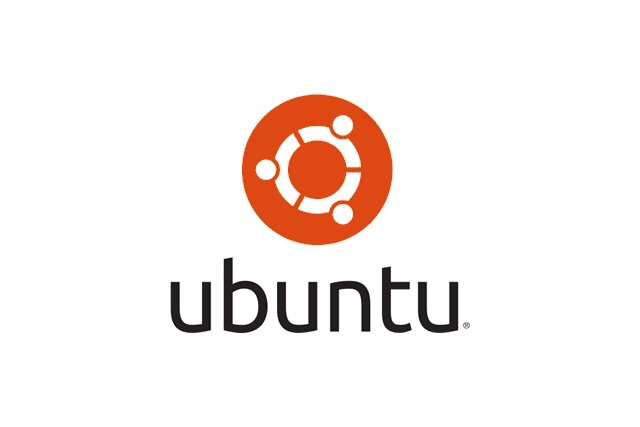
Ubuntu desktop comes to AWS
Until today Amazon WorkSpaces cloud desktop solution simply offered the option of either Windows or Amazon Linux machines. Now though Canonical has announced the availability of Ubuntu WorkSpaces on AWS.
This is a fully managed virtual desktop infrastructure (VDI) on the public cloud and the first third-party Linux OS to be available on the platform. It gives developers access to a wide choice of open source tools and libraries in cutting-edge fields like data science, artificial intelligence/machine learning, cloud and internet-of-things.

Over 80 percent of companies have had cloud security incidents in the last year
According to a new report 81 percent of organizations have experienced a cloud-related security incident over the last 12 months, with almost half (45 percent) suffering at least four incidents.
The findings, from machine identity management specialist Venafi, reveal that the underlying issue for these security incidents is a dramatic increase in security and operational complexity connected with cloud deployments.

Cryptojacking costs victims over 50-times what the attacker makes
According to a new report from Sysdig, the unified container and cloud security company, it costs $430,000 in cloud bills for an attacker to generate $8,100 in cryptocurrency revenue. This works out at a $53 cost to the victim for every $1 the cryptojacker makes.
The report takes an extensive look at TeamTNT, a notorious cloud-targeting threat actor that generates the majority of its criminal profits through cryptojacking. TeamTNT is best known for its crypto‐jacking worm activity, which began in 2019, exploiting vulnerable instances of popular key‐value store Redis.

2022's most pressing cloud challenges
Despite the disruption and changes the pandemic unleashed on our world, technology continues to iterate through inevitable cycles of adaptation, innovation, and change. The worldwide shift to remote work, for example, placed a huge burden on IT infrastructure, ultimately quickening the pace of digital transformation. With this comes several challenges that IT leaders must navigate and balance.
According to the Foundry’s (formerly IDG Communications) 2022 Cloud Computing Survey, controlling cloud costs, data privacy and security, and securing expertise across in-house and supplier teams, are the three core challenges that will determine the success of cloud investments in the months and years to come.

Why virtualization is making enterprise data warehouses obsolete [Q&A]
For many years the database has been at the heart of enterprise IT. But the shift to the cloud has led to massive challenges with migrations proving both slow and expensive.
A different way to approach this is to use virtualization, allowing existing applications to run on any modern cloud platform without being rewritten or replaced. We spoke to Mike Waas founder and CEO of Datometry, a SaaS database virtualization platform, to find out more.

Organizations are being overwhelmed by cloud complexity
As the move toward cloud-native architectures accelerates, the data generated outstrips the ability of current solutions to produce meaningful analytics, according to a new study.
The survey, from software intelligence company Dynatrace, of 1,300 CIOs and senior cloud and IT operations managers in large organizations, shows 71 percent of CIOs say the explosion of data produced by cloud-native technology stacks is beyond human ability to manage.

Public cloud security gaps expose business critical assets
The public cloud has been widely adopted by organizations of all sizes, but a new report from Orca Security reveals some alarming shortcomings in security.
Among the key findings, 72 percent of organizations have at least one Amazon S3 bucket that allows public read access, and 70 percent have a Kubernetes API server that is publicly accessible.

80 percent of organizations have suffered a severe cloud security incident
A new report finds 80 percent of organizations have experienced at least one severe cloud security incident in the past year, and 41 percent say cloud native services increase complexity, further complicating their security efforts
On a positive note though the study, from developer security specialist Snyk, shows 49 percent of organizations now find deployment is faster as a result of improved cloud security.

Cloud computing, SaaS and the new normal for manufacturers
Over the last two to three decades, cloud computing and software-as-a-service (SaaS) have been increasingly gaining momentum in their adoption. More and more IT departments, CIOs, CFOs, CEOs and many other disciplines are now realizing the extraordinary business benefits of Cloud/SaaS over their traditional in-house client-server IT architectures.
Justifiably therefore, more and more manufacturers are actively switching their legacy quality management systems to more advanced cloud-based quality platforms, and for good reason. Simply put, in today’s ever-changing and volatile manufacturing climate, the cost advantages, power, and versatility of the cloud have become essential to survival. Coupling this with the advancement and maturation of core technologies, most organizations are now adopting a 'cloud-first' stance when selecting the latest and best in-class technology capabilities.

Protecting data during digital transformation [Q&A]
In recent years, many businesses have embraced digital transformation to boost productivity and streamline operations in an attempt to create competitive advantages. But in the process of migrating critical operations to the cloud, they have exposed themselves to new risks.
With cloud apps accessible from anywhere, it not only helps your users get their work done, it also provides attackers with new vectors to exploit.

Almost half of education institutions see attacks on their cloud infrastructure
A new study reveals that 47 percent of educational institutions have suffered a cyberattack on their cloud infrastructure within the last 12 months.
The research from Netwrix shows that for 27 percent of these incidents in the cloud were associated with unplanned expenses being incurred to fix security gaps.

Cloud servers are the most common way in for cyberattacks
New data unveiled by the Atlas VPN team shows that cloud servers are now the number one way in for cyberattacks on businesses, with 41 percent of companies reporting them as the first point of entry.
The data, based on the Cyber Readiness Report 2022 by insurer Hiscox, also shows a 10 percent increase in cloud server attacks over the year before.

Enterprises are storing more data than ever
According to a new study more than 50 percent of enterprises are managing 5PB or more of data, compared with less than 40 percent that were doing so in the same survey last year.
The 2022 Unstructured Data Management Report from Komprise also shows most are now spending more than 30 percent of their IT budget on storage and backups.

IBM and VMware help businesses modernize hybrid cloud workloads
IBM and VMware are using this week's VMware Explore event to announce an expanded partnership to help clients and partners modernize mission-critical workloads and speed up time to value in hybrid cloud environments.
The two companies are also planning to help clients in regulated industries such as financial services, healthcare and the public sector address the cost, complexity and risk of migrating and modernizing mission-critical workloads in the cloud.

How cloud computing turned security on its head
When an organization migrates its IT systems to the cloud -- and builds new applications in the cloud -- it relieves its security team of the responsibility of building and maintaining physical IT infrastructure. The shared security model of cloud dictates that cloud service providers (CSPs) such as Amazon Web Services (AWS), Google Cloud, and Microsoft Azure are responsible for the security of the physical infrastructure. Their customers are responsible for the secure use of cloud resources.
But embracing the cloud for building and managing new applications means security teams cannot deploy the traditional security technologies and processes they’ve long relied on to thwart cyberattacks. Cloud computing represents a paradigm shift in their roles and responsibilities and their approach to protecting sensitive data against falling into the wrong hands.
